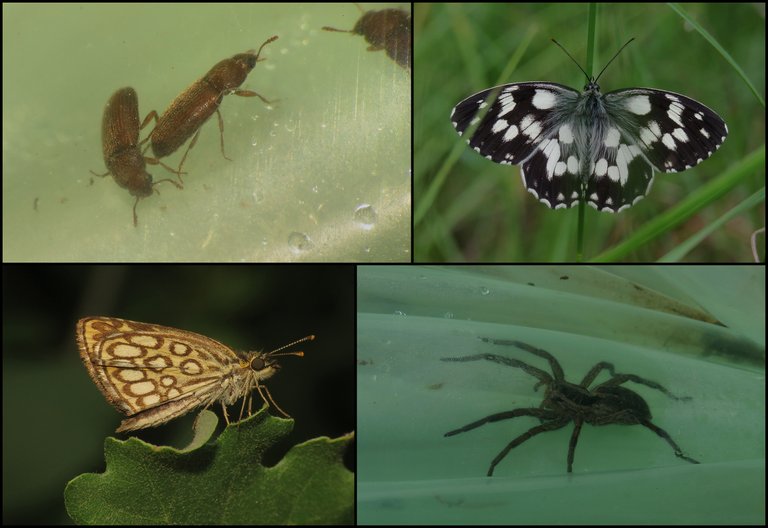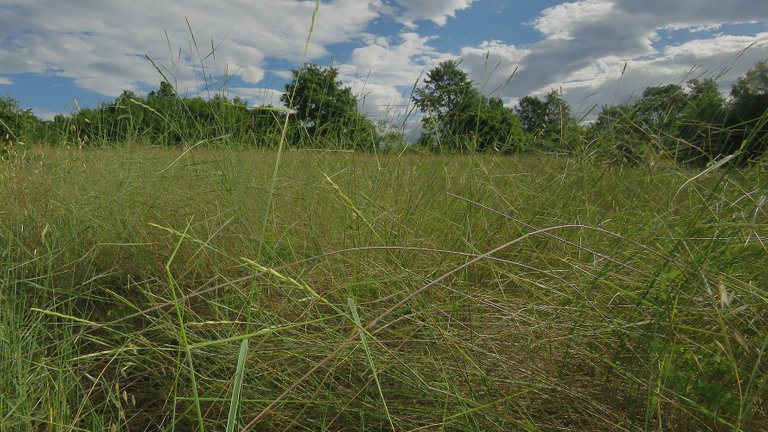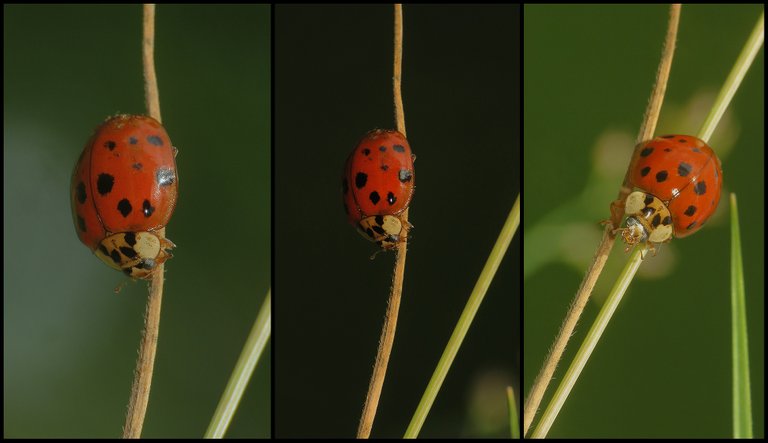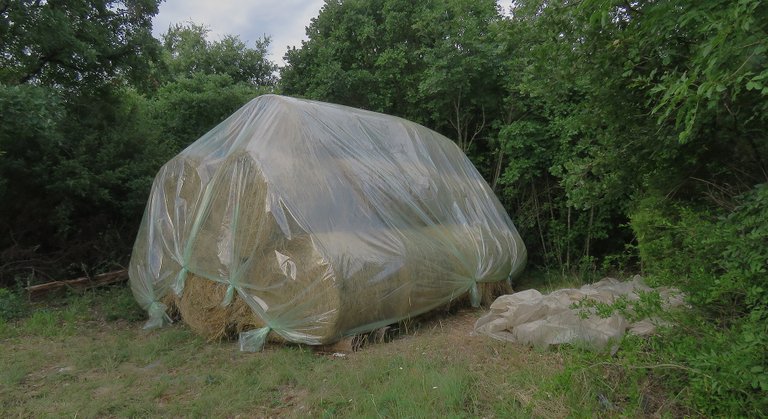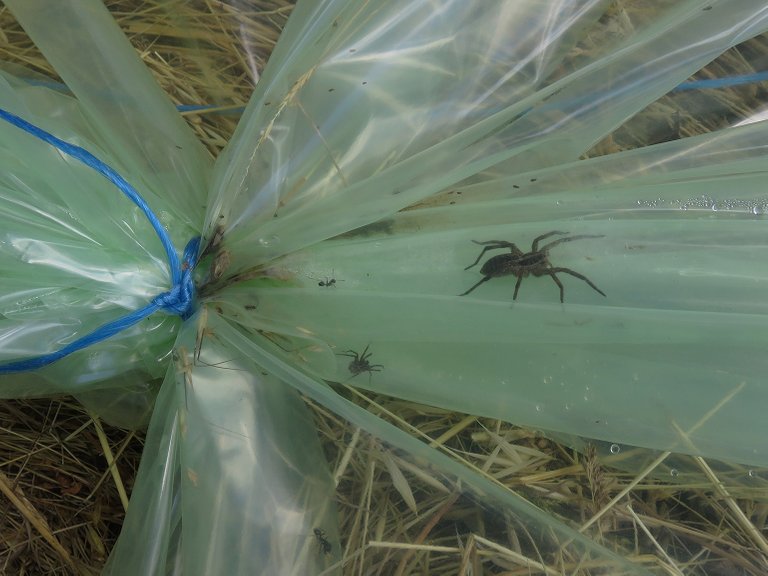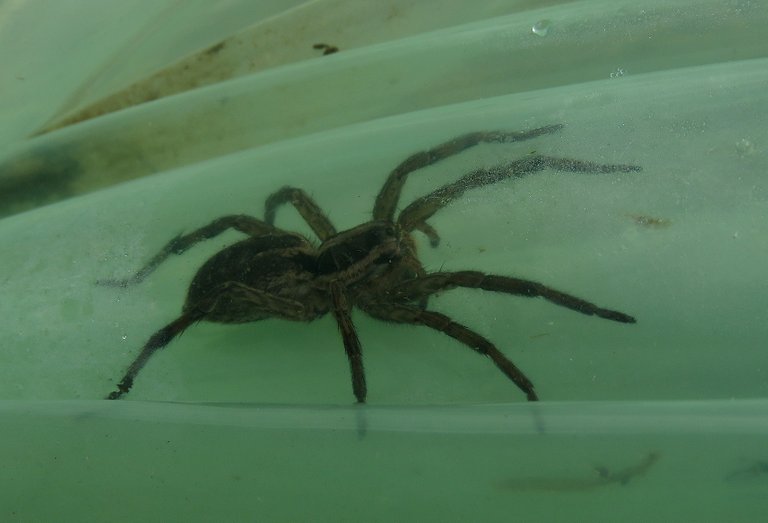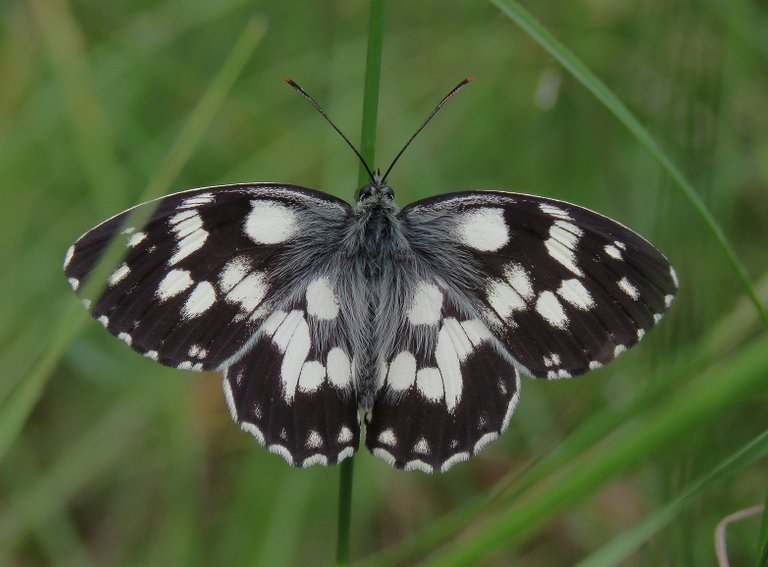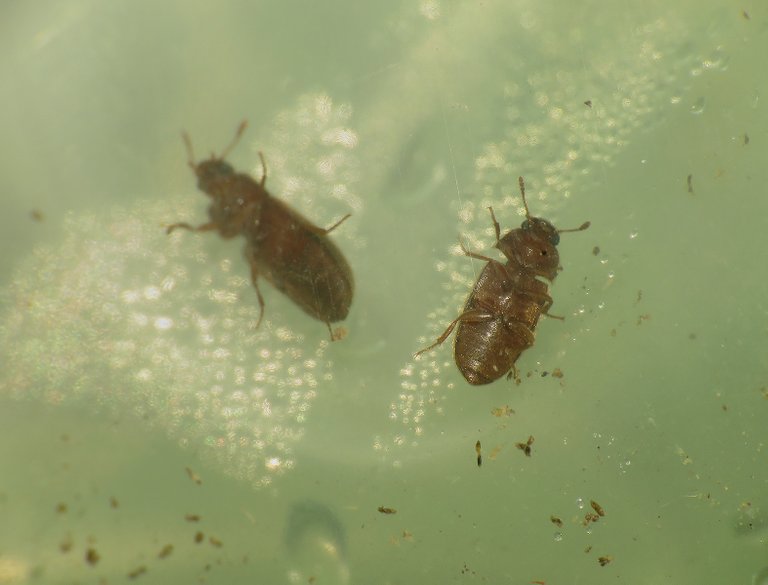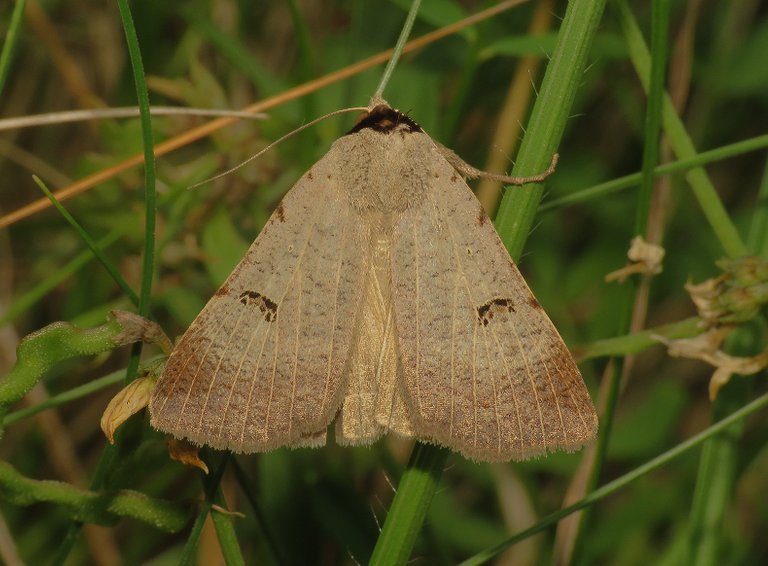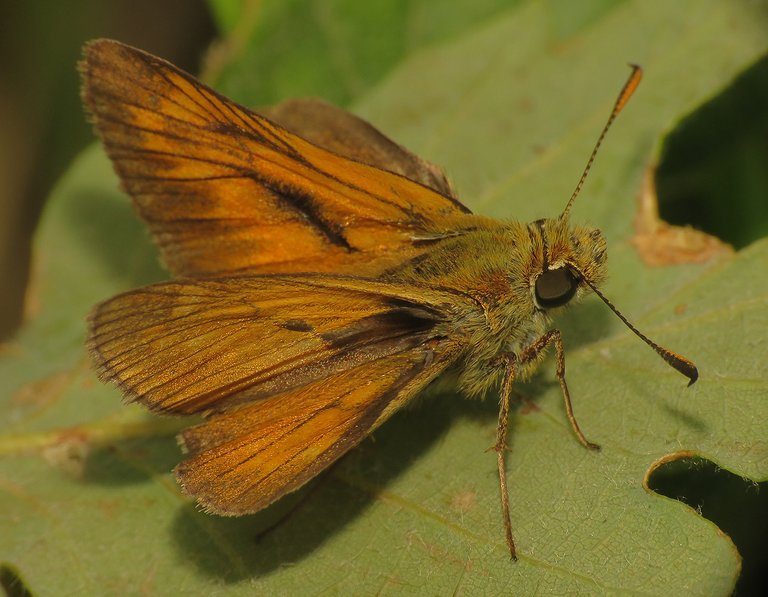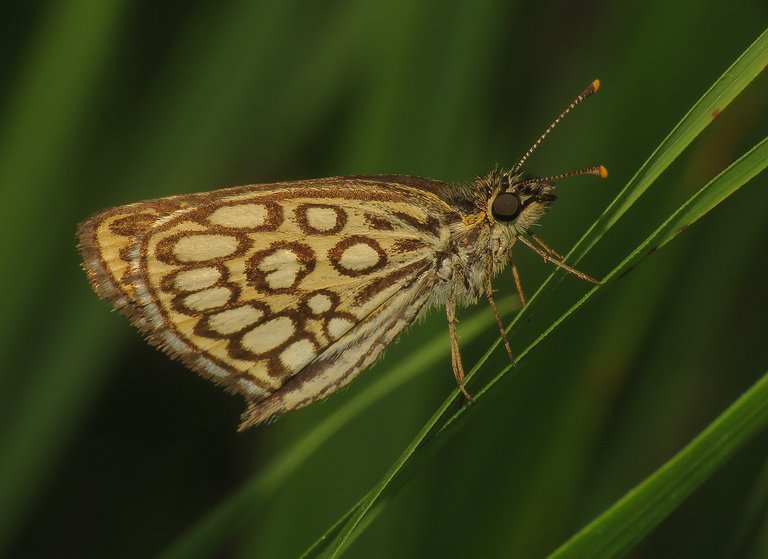On the 10th of June this year, fairly early in the morning, I parked my car by the side of the road that leads to one of the many small villages in the area around Svetvinchenat, the small town shown in yesterday's post, and walked across the meadow in search of small or minuscule stuff to explore through my macro lens.
I found plenty of insects, some flowers, and spiders too, so this won't be a short post.
The morning temperature was somewhere in between warm and almost slightly cold, and the weather was partially cloudy going towards the sunny.
This Harmonia axyridis ladybug was caught running down the stem of some herbaceous plant.
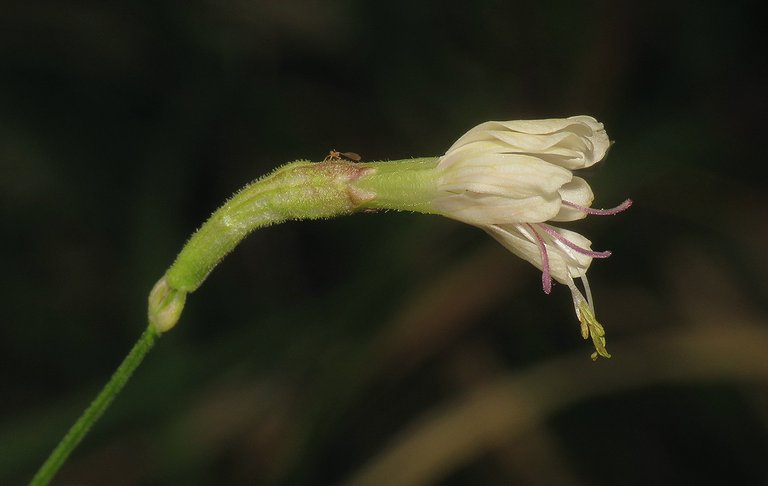
This is the Silene nemoralis flower.
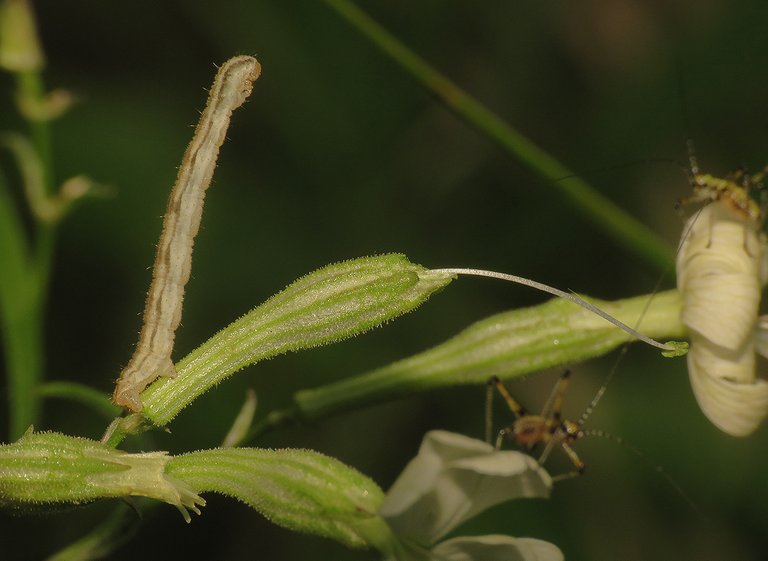
I found two insect species on that plant. You can see both of them in this photograph. The focus is on the camouflaged larva in the foreground. If you take a good look at the blurred background, you may notice two small bushcrickets with long antennae. In the following photograph ...
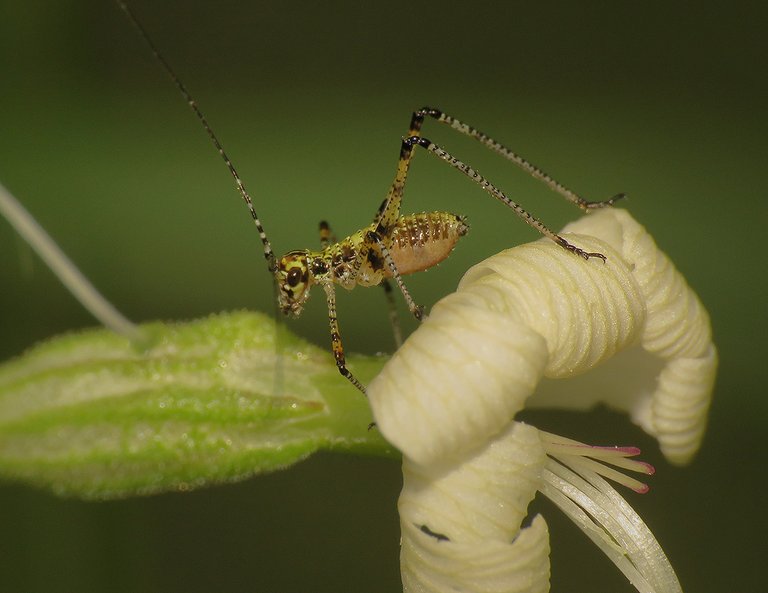
... the bushcricket nymph is clearly visible and sharp.

This is the juvenile wingless version of the Phaneroptera nana bushcricket. As you can see through these photographs, the flowers were in various stages of development. The petals of the one shown in the first shot of this series weren't completely formed. In the picture above, you can see an aging flower with folded petals that will wither soon. The flowers in the following photograph ...
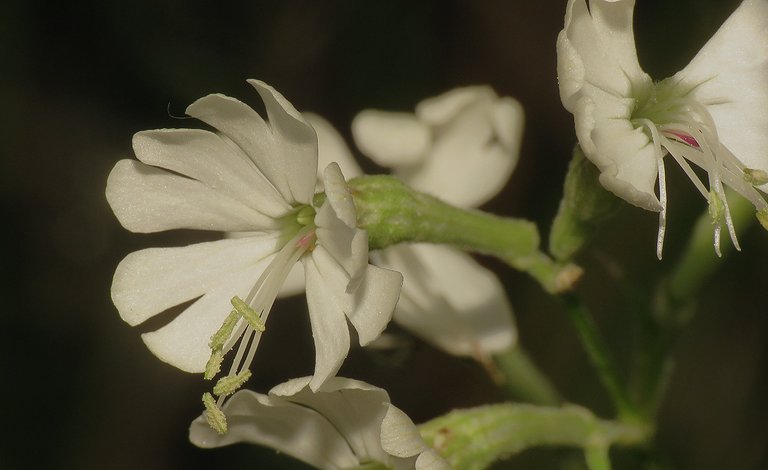
... were photographed in their prime.
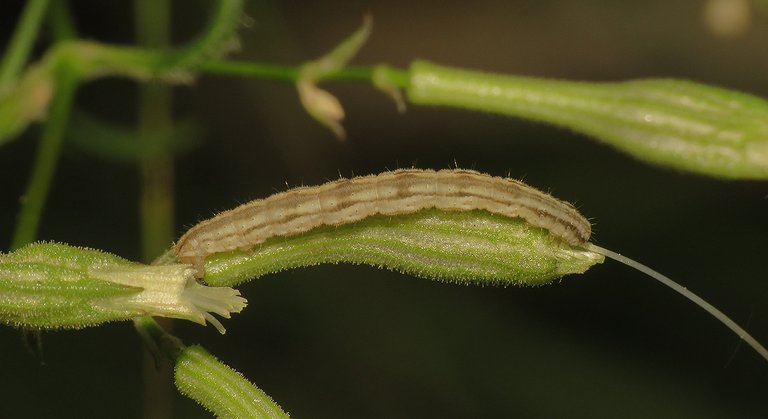
This caterpillar was chewing what remains on the top of the flower. The petals and the anthers of that and the neighboring flower were probably eaten by the same kind of larvae.
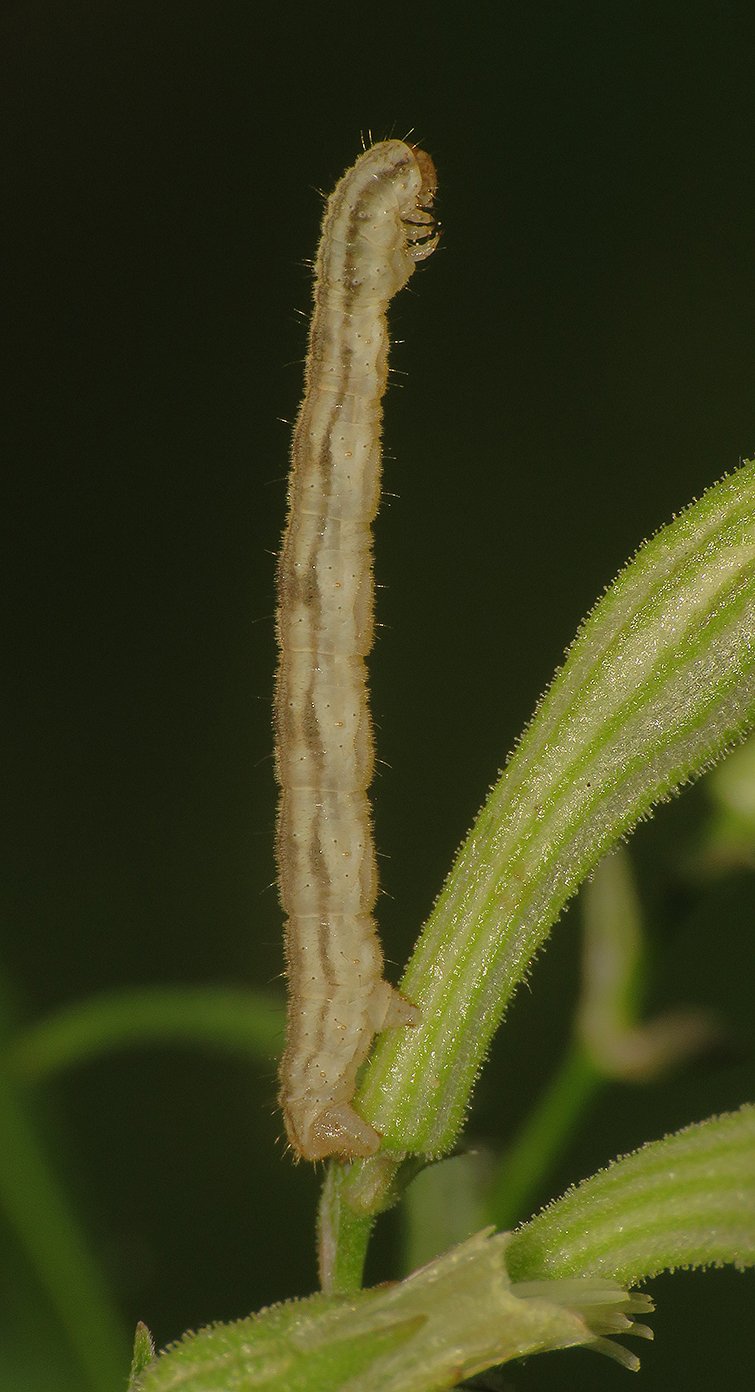
From a distance, the caterpillar looks like a part of the plant in this vertical pose.
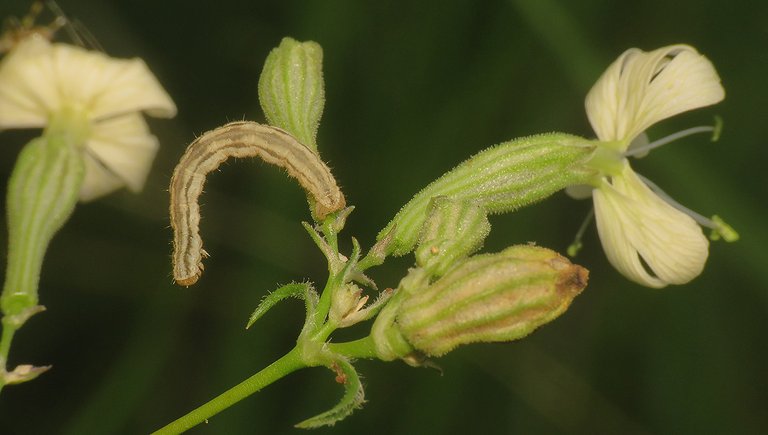
The caterpillar shown in these photographs it's the larval stage of the Eupithecia schiefereri, a moth from the Geometridae family. When I left the Silene nemoralis plant ...
... after some more walking, I came across this pile of hay balls covered with plastic foil. When I came closer ...
... I saw various spiders and insects trapped under the transparent plastic.
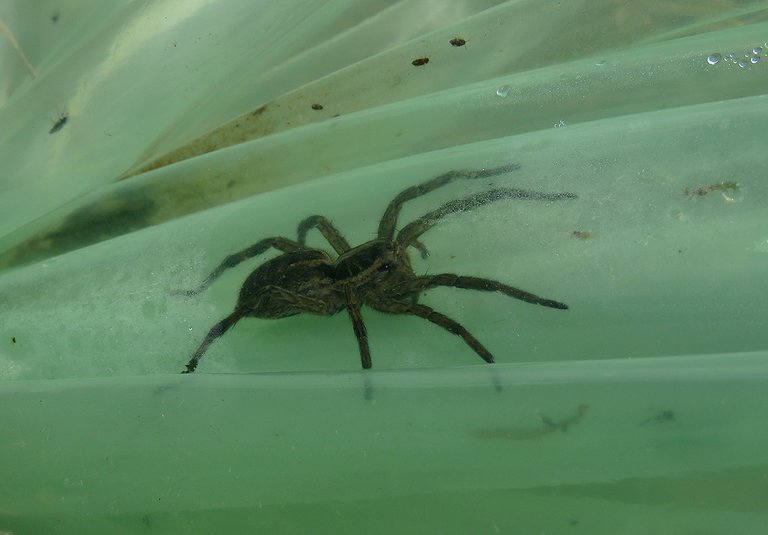
This is the Hogna radiata.
A pretty big spider from the Lycosidae family.
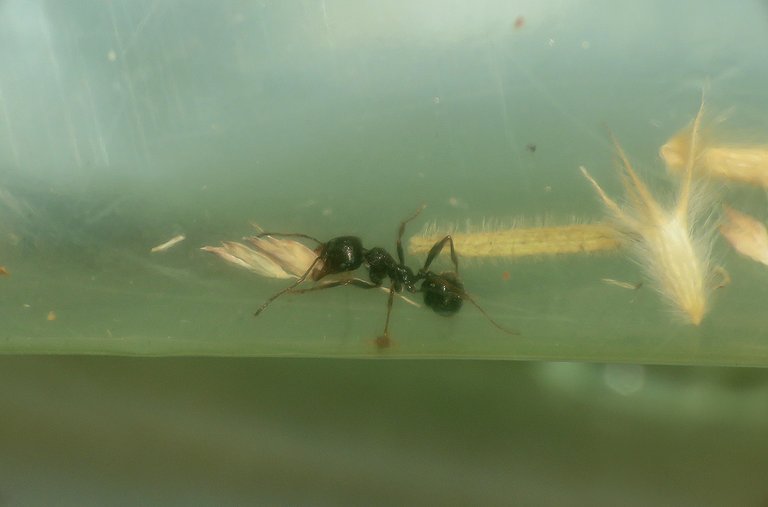
The ants were collecting the grains from the grass stored under the foil.
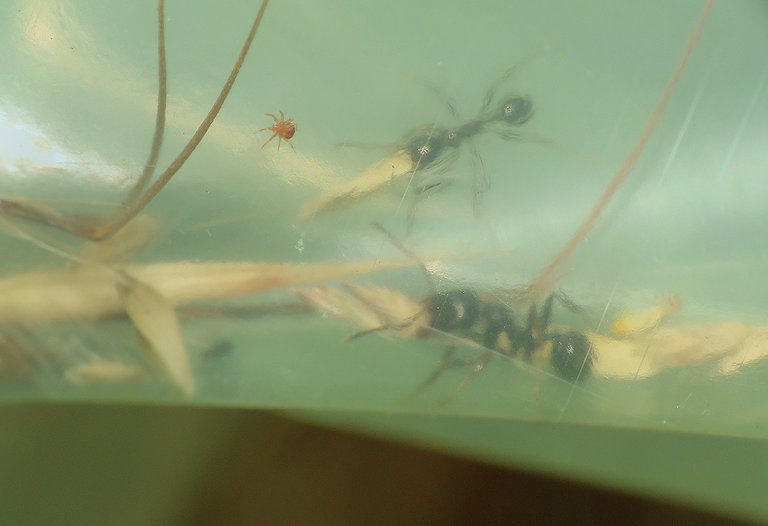
In this photograph, the ants are blurred in the background. In the foreground, you can see a very small spider. Can't tell you the name of the species. The ants are Messor capitatus workers.
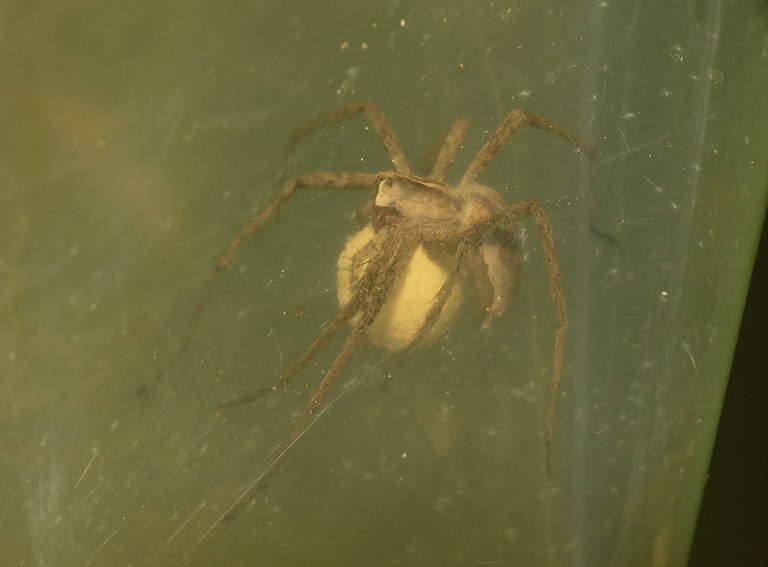
This is the Pisaura mirabilis, a spider from the Pisauridae family. Here you can see the female with the cocoon.
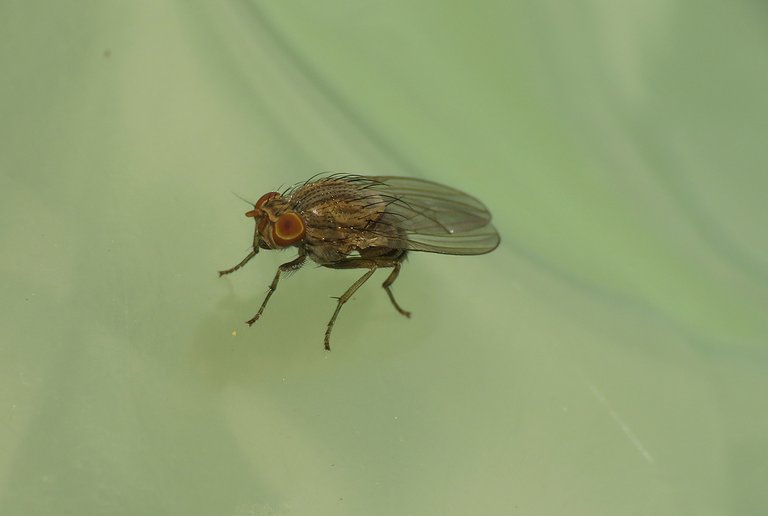
This small fly was resting on the other side of the foil. Can't tell you the name of the species and I'm not sure about the family. I'll say that the family could be Drosophilidae or Lauxaniidae.
Around the pile of hay, I saw many Melanargia galathea butterflies.
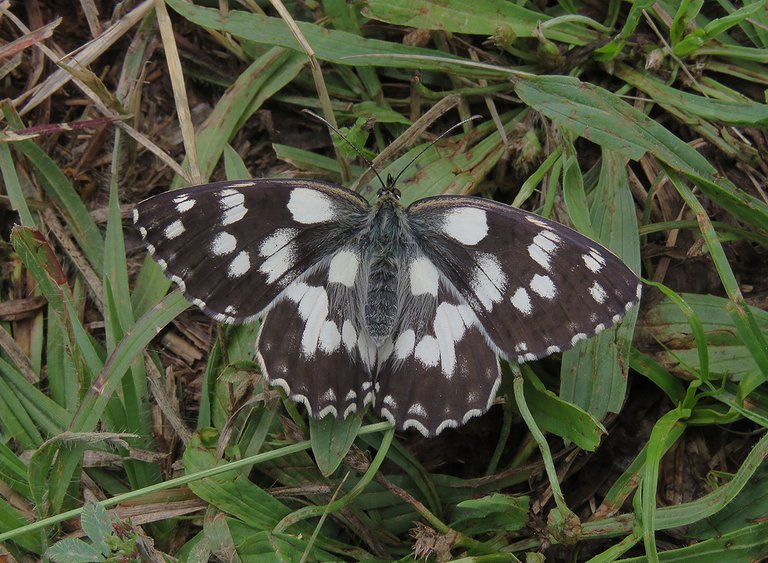
Some of them were resting on the grass down on the ground.
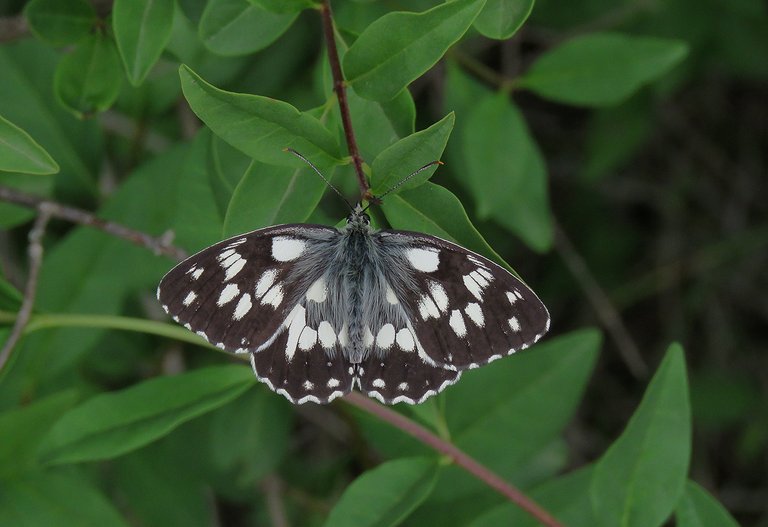
Others were quiet on the twigs of the shrubs. Later in the day, these butterflies will be active and not so easy to photograph.
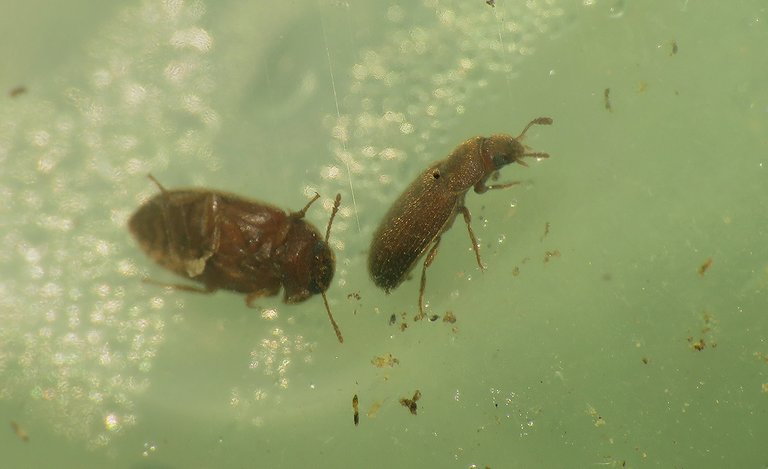
Here you can see two small beetles trapped in the fold of the foil.
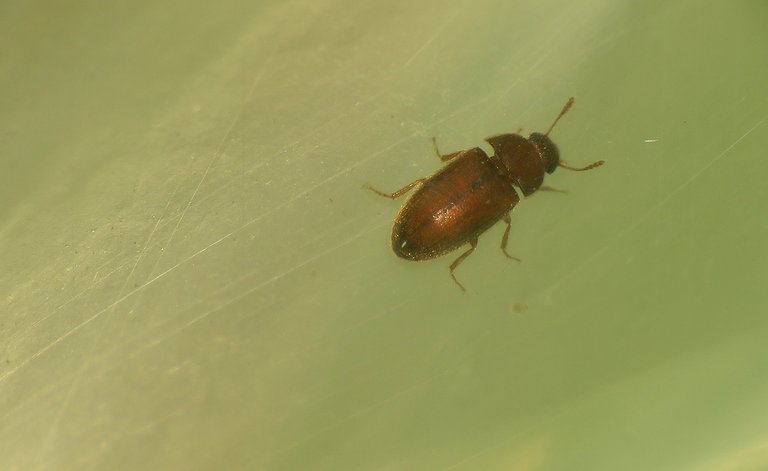
This is the Typhaea stercorea ...
... a species from the Mycetophagidae family. The Wikipedia article states that this species can be found: " on ripening hay and grain crops before harvest in temperate and tropical areas." So it's no wonder that they were present here. I never noticed this species before. Probably because they are very small and hard to find when spread across the fields.
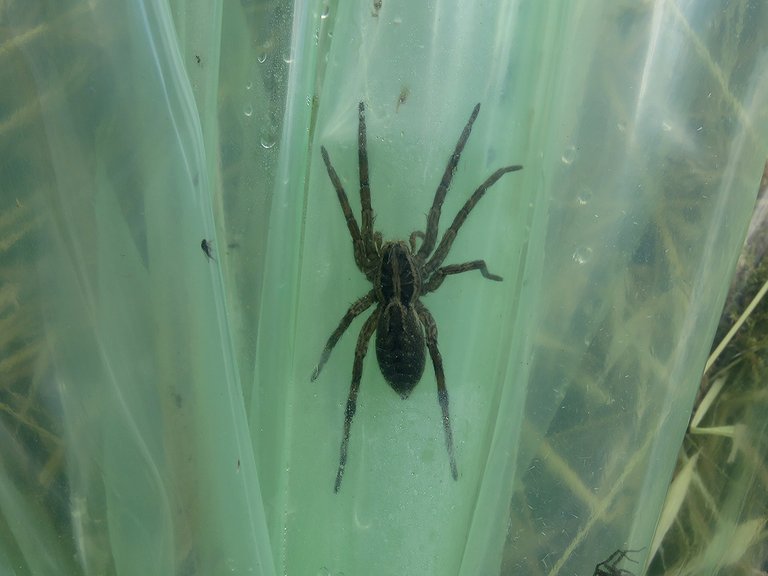
Here you can see another big impressive Hogna radiata spider.
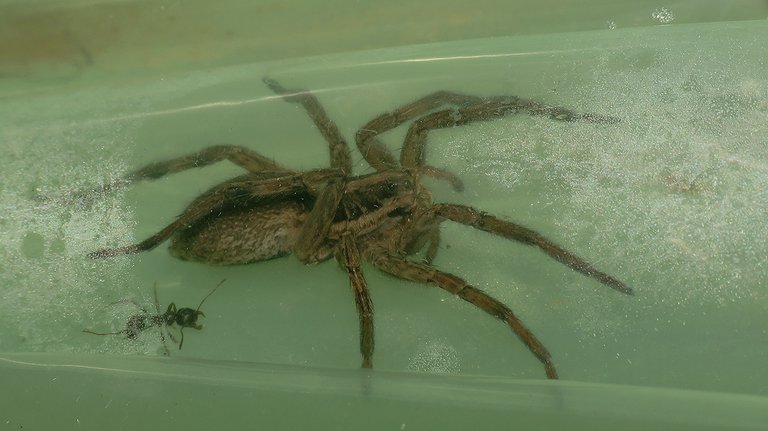
In this photograph, the spider and the ant are stuck together under the foil. When looking at this picture, you may think that the spider isn't particularly big because the ant just doesn't look that small after all. But I can tell you that the Messor capitatus it's a pretty big harvester ant.
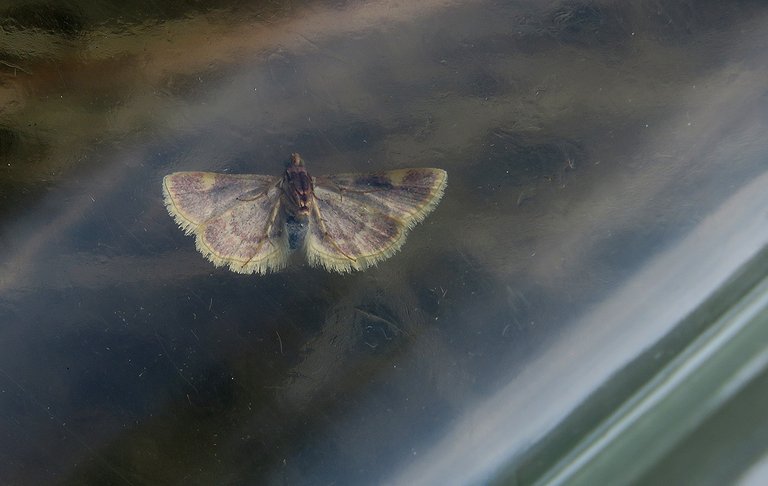
This small moth looks like another insect caught under the foil. Hypsopygia costalis is the name of the species. The family is Pyralidae. Unlike the spiders, the moth didn't end up here by accident. Among other things, the Wikipedia article about this insect states the following: " The caterpillars feed on dry vegetable matter. They have been found in haystacks or thatching, as well as in chicken (Gallus) and magpie (Pica) nests. The caterpillar is injurious to clover hay, and to other hay when mixed with clover. Its depredations can be prevented by keeping the hay dry and well-ventilated, as the insect preferably breeds in moist or matted material such as is to be found in the lower parts of haystacks, where affected hay becomes filled with webbings of the caterpillars and their excrement, rendering it unfit for feeding. Treatment is to burn the webbed material and to thoroughly clean the affected location."

Before leaving the pile of hay, I photographed another fly that was resting on my side of the foil. I'm not sure about the species. After a fairly long Internet search, I found three similar-looking flies from three different families. In my opinion, the Hylemya vagans from the Anthomyiidae family is the most likely candidate of the three.

A bit later and about a hundred meters further ...
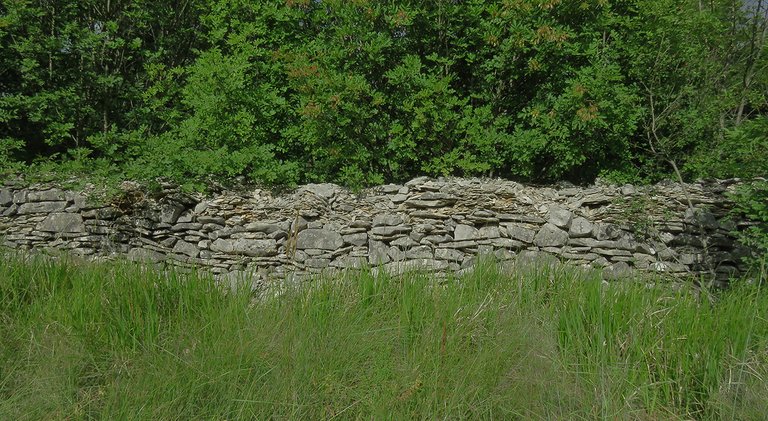
... I stopped by this old drystone wall.

On the blade of grass very close to the wall, I found this beautiful fly from the Sciomyzidae family. Flies from that family are commonly known as marsh flies but unlike most of its relatives, Trypetoptera punctulata prefers dry habitats, especially calcareous woodlands and grasslands.
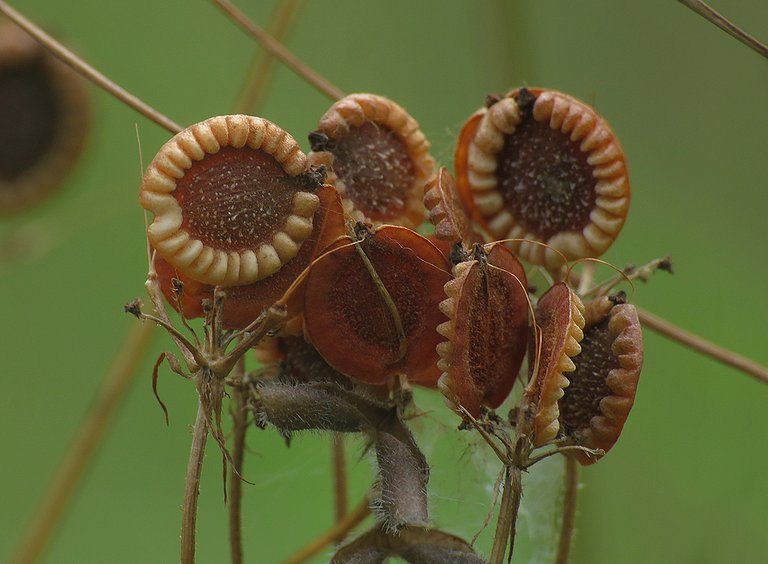
Here you can see the interesting little fruits ...
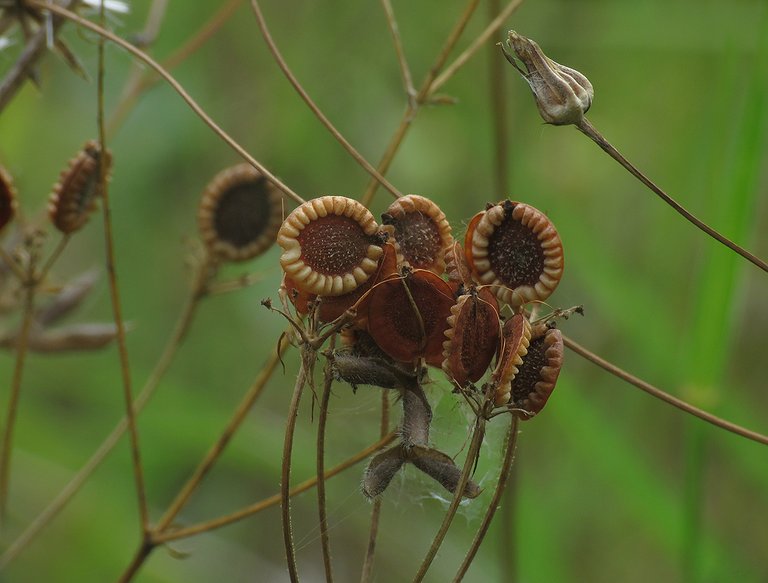
... of the Tordylium apulum plant.
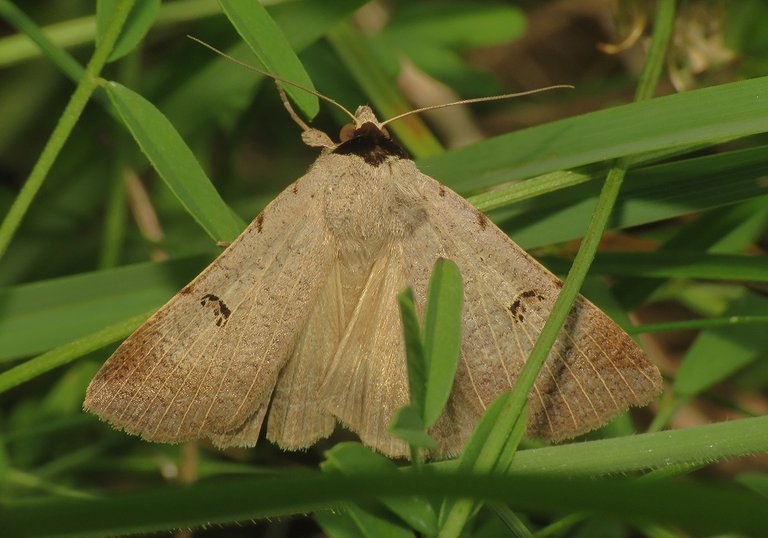
This robust, medium-sized moth belongs to the Erebidae family.
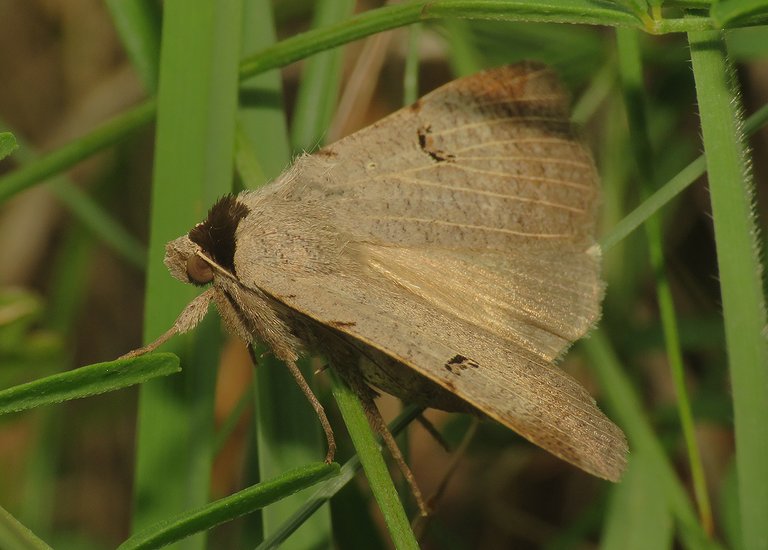
Lygephila pastinum is the scientific name of the species. The common name is "blackneck".
The larvae feed on various herbaceous plants that grow on the meadows.
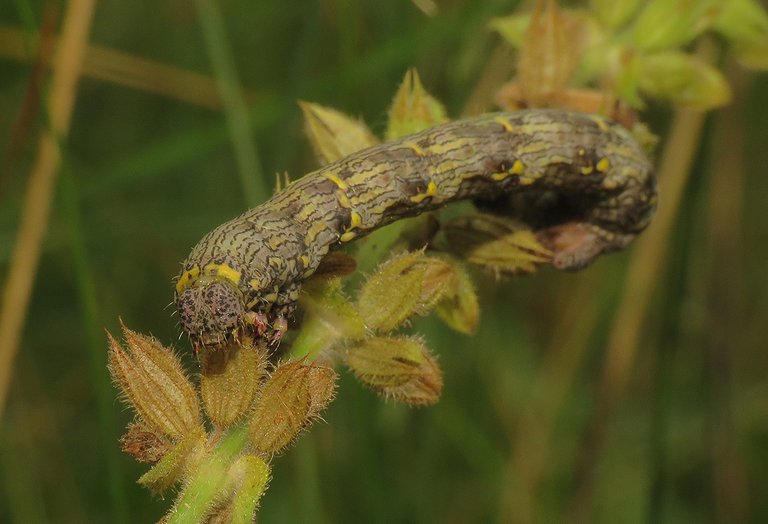
Not far from there, I found a relatively big caterpillar.
This is the larva of the Lycia hirtaria, a moth from the Geometridae family.
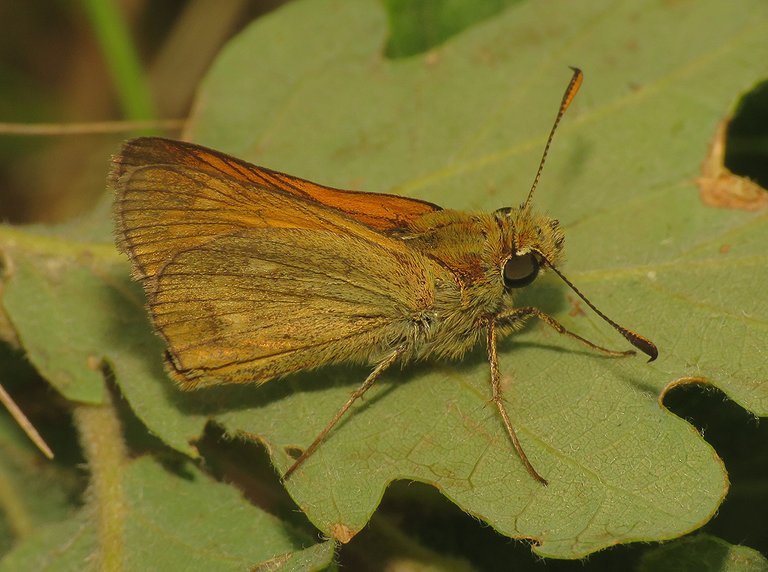
On one of the small oak trees that grew behind the wall, I found a small butterfly from the Hesperiidae family. I'm not sure about the species because a few very similar-looking ones are present in the area.
I often see the butterfly in this pose, but I rarely get the opportunity for a good photograph. Usually, the butterfly folds its wings or flies away when I get close enough.
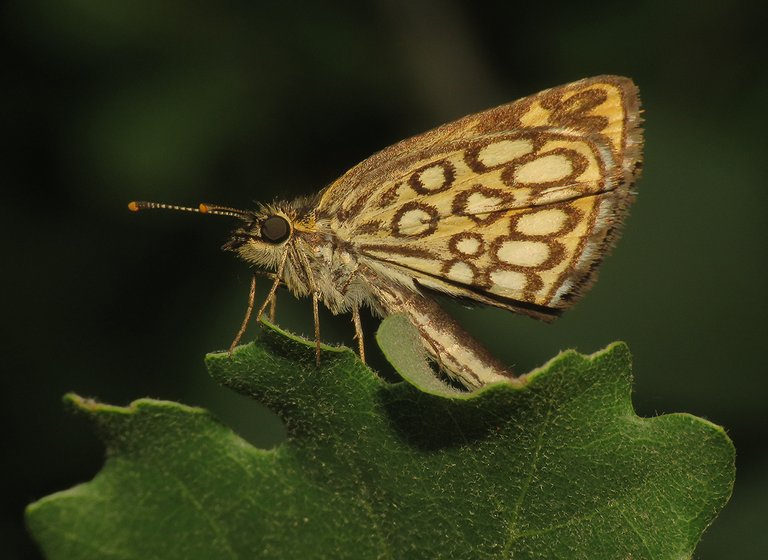
On another tree of the same kind, I found another Hesperiidae butterfly.
I can tell you the name of the species this time. This is the Heteropterus morpheus.
This crab spider was photographed on one of the shrubs a bit further along the wall. The family is Thomisidae. The genus is probably Xysticus or Ozyptila. Quite a few very similar-looking species are present in this area so I can't tell you which one exactly is this.
This beautiful iridescent moth from the Adelidae family, the Nemophora metallica, was photographed on the Knautia arvensis flower.
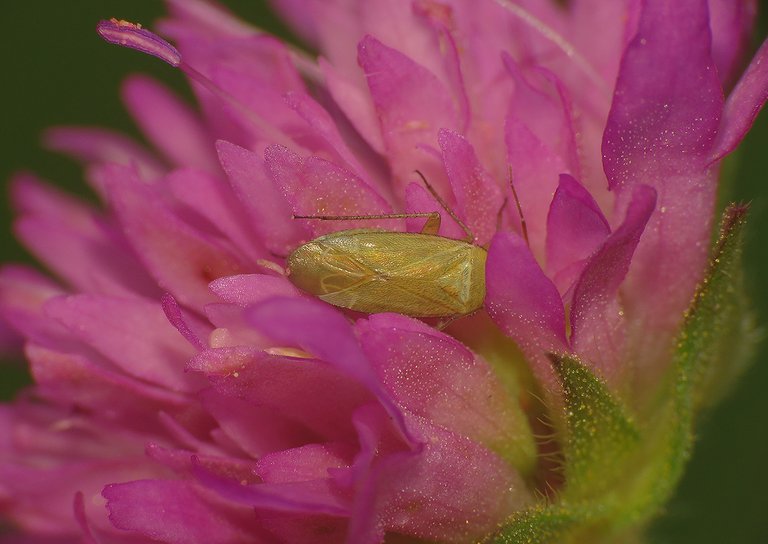
On the neighboring flower of the same kind, the Plagiognathus chrysanthemi, a small bug from the Miridae family was partially hidden by the petals.
The following links will take you to the sites with more information about some of the protagonists of this post. I found some stuff about them there.
https://en.wikipedia.org/wiki/Harmonia_axyridis
https://www.gbif.org/species/5585899
https://en.wikipedia.org/wiki/Hogna_radiata
https://en.wikipedia.org/wiki/Messor_capitatus
https://en.wikipedia.org/wiki/Pisaura_mirabilis
https://en.wikipedia.org/wiki/Melanargia_galathea
https://en.wikipedia.org/wiki/Typhaea_stercorea
https://en.wikipedia.org/wiki/Hypsopygia_costalis
https://en.wikipedia.org/wiki/Trypetoptera_punctulata
https://en.wikipedia.org/wiki/Tordylium_apulum
https://en.wikipedia.org/wiki/Lygephila_pastinum
https://www.ukmoths.org.uk/species/lycia-hirtaria/larva/
https://en.wikipedia.org/wiki/Large_chequered_skipper
https://en.wikipedia.org/wiki/Nemophora_metallica
AND THAT'S IT. AS ALWAYS IN THESE POSTS ON HIVE, THE PHOTOGRAPHS ARE MY WORK - THE END.
